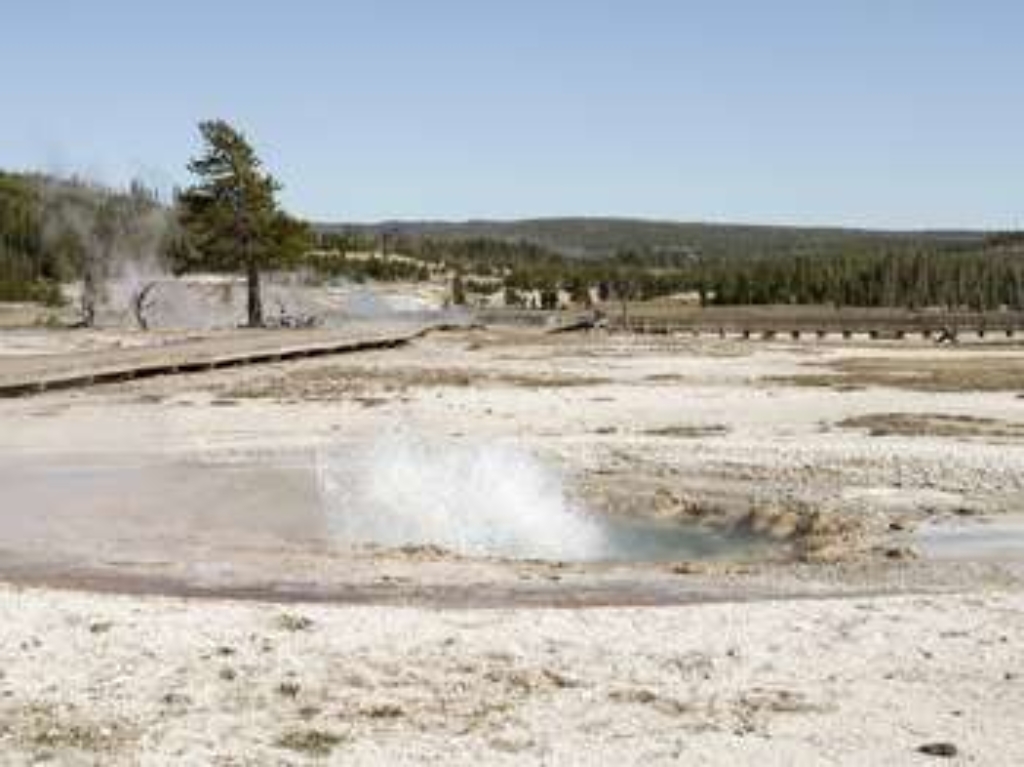
Mustard Spring has an East and West Mustard Spring, two pools about 50 feet (15.2 m) from each other. Currently, East Mustard Spring is an active geyser with 2–3 minute intervals between eruptions. Water levels in West Mustard Spring sit lower. Both pools are similar in size, but East Mustard Spring is surrounded by small mounds of geyserite deposits and a thin surrounding layer of runoff water outside the geyserite. West Mustard Spring, due to being shallower, has vegetation growing right up to the pool. Yellow and orange thermophiles fill the shallow runoff pools of East Mustard Spring and the pool of West Mustard Spring.
Mustard Spring has an average temperate of 183.3°F (84.1°C), an average pH of 8, and an average conductivity of 2174 uS/cm.
Hot Springs
Hot springs are the most common hydrothermal features in Yellowstone. Their plumbing has no constrictions.
Superheated water cools as it reaches the surface, sinks, and is replaced by hotter water from below.
This circulation prevents water from reaching the temperature needed to set off an eruption.
Use Caution in Hydrothermal Areas
- Stay on boardwalks and designated trails.
- Hydrothermal water can severely burn you.
- Never run, push, or shove.
- Supervise children at all times.
- Do not scratch hydrothermal mats.
You are responsible for your safety.
Think safety, act safely. Yellowstone is a dangerous place.
Is there something we missed for this itinerary?
Itineraries across USA


















































